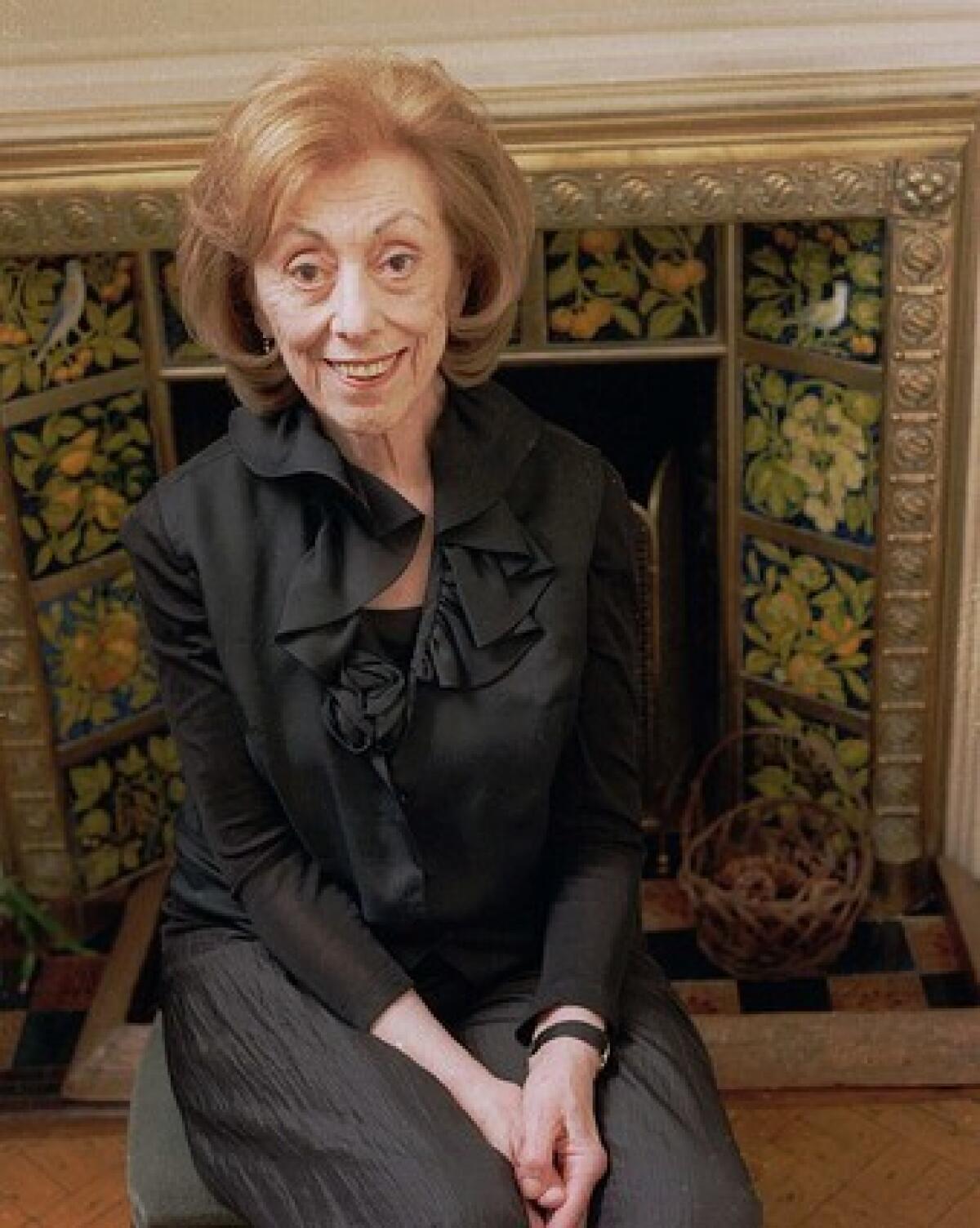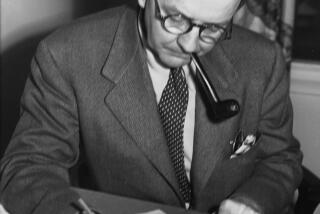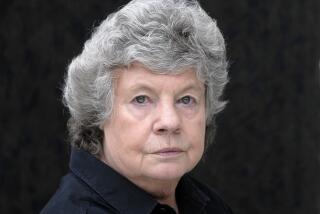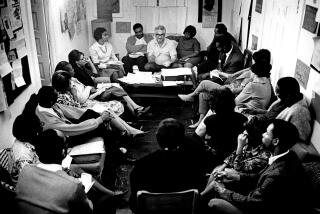Fiction author Hortense Calisher dies at 97

Hortense Calisher, a prize-winning writer and former president of PEN known for her dense prose in such works of fiction as “False Entry” and “In Greenwich There Are Many Gravelled Walks,” has died in New York City. She was 97.
Calisher died Tuesday in Manhattan of natural causes, said her granddaughter Katy Spencer.
Calisher, the author of more than 20 books, was a three-time nominee for the National Book Award and a five-time winner of the O. Henry Prize for the short story. Several works, notably “In Greenwich,” have been anthologized.
Like Marcel Proust and Henry James, the writers to whom she was most often compared, Calisher composed in the thick, quantum rhythms of the mind. Her sentences were long, her language complex and her story lines often elusive.
“I do know that in the novel, I feel free to digress,” Calisher told the Associated Press in 1998. “We had an old edition of Victor Hugo and you have no idea if you haven’t read him recently how digressive Hugo is. He just feels he can somersault anywhere he pleases.
“We were a lively, talkative family. At dinners, I would sit at the end of the table and I would listen. There were anecdotes and they don’t always run in a straight line.”
Admired by Anne Tyler and Cynthia Ozick among others, Calisher wasn’t well-known to the general public. The head of the Barnard College drama club as an undergraduate, she was tall and graceful with dark, lively eyes and a confident, well-timed manner of speech.
She was born in New York in 1911. Her father was a Jew of English descent from Virginia and her mother a Jewish immigrant from Germany.
A reader from early on, Calisher didn’t try writing professionally until the late 1940s. After graduating from Barnard in 1932, she worked in social welfare and modeling among other professions. She also married and raised two children.
But writing haunted her like an overlooked task.
“I felt the years I wasn’t writing there was a kind of glass wall between me and the rest of the world,” she said.
“But a man named Edmund Fuller said he would teach me writing, so I registered in his course. He said he didn’t feel he could teach poetry and asked me if I could write prose. I wrote a story that I had kept in my head while I was walking my little boy to nursery school, and I brought it to him and he said, ‘That’s publishable.’ ”
Calisher got to know William Maxwell, John Cheever and other New Yorker figures, and in the 1950s, she toured the Far East for the State Department. In the 1980s, she served terms as president of PEN and of the American Academy for Arts and Letters.
She once observed that she liked to break the mold even as she shaped it, and her fiction evolved from the relatively straightforward narratives of her early New Yorker stories to the highly complex structure of her longer works. Her subject matter ranged from love and family to space travel and politics.
“I consider myself to have led a pretty full life,” Calisher once said. “So much of writing is after the event. When I first wrote, I wrote about my family. I thought, ‘Well, I won’t write anymore because that’s all I know.’ It didn’t turn out to be that way.”
Calisher’s survivors include her husband of 50 years, author Curtis Harnack. From a previous marriage, to Heaton Bennet Heffelfinger, she had a son, Peter, and a daughter, Bennet, who died in the early 1970s, according to her family.
More to Read
Start your day right
Sign up for Essential California for the L.A. Times biggest news, features and recommendations in your inbox six days a week.
You may occasionally receive promotional content from the Los Angeles Times.






